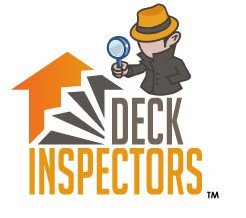The Resident’s Guide to Apartment Deck Safety: SB 721 Inspections

As a resident of an apartment building in California, it’s essential to understand the importance of regular deck safety checks. SB 721 Inspection requirements are in place to ensure that the decks, balconies, and other elevated exterior structures in your building are safe and structurally sound. But even beyond these inspections, residents can play a key role in maintaining deck safety by following best practices for proper use and staying alert to potential hazards. This guide will help you understand your role in keeping your deck safe and how SB 721 Inspection works to protect you. Understanding SB 721 Inspections and Deck Safety The SB 721 Inspection law requires apartment buildings with three or more units to have their exterior elevated elements, such as decks and balconies, inspected every six years. These inspections are designed to identify signs of structural damage, wear, and other issues that may compromise safety. Licensed professionals, such as architects or structural engineers, perform the inspections to ensure the decks meet safety standards and are not at risk of collapse or failure. While these professional inspections are critical, residents can also help maintain the safety of their apartment decks by following best practices and reporting any concerns to building management. Here are a few tips for residents to contribute to deck safety in between inspections: Tips for Proper Deck Use and Maintenance Avoid Overloading the Deck One of the most common causes of deck failure is overloading. Decks have weight limits, and exceeding them can lead to structural damage or even collapse. Avoid placing heavy objects, such as large planters or furniture, on your deck, and be mindful of the number of people using the deck at any given time. When hosting gatherings, ensure you understand your deck’s weight capacity and never exceed it. Keep the Deck Clear of Debris Leaves, dirt, and other debris can accumulate on your deck over time. While these materials may seem harmless, they can trap moisture against the deck’s surface, leading to rot or deterioration of wood and rust on metal components. Regularly sweep and clean your deck to prevent moisture buildup and prolong its lifespan. Inspect for Visible Signs of Damage Residents should be vigilant in inspecting their decks for visible signs of damage between SB 721 Inspections. Look for cracks in the wood, rusted nails, or loose railings, all of which can indicate structural problems. If you notice any of these issues, report them to your building manager immediately for further evaluation by a professional. Avoid Water Damage Water damage is one of the most common causes of deck deterioration. Avoid overwatering plants on the deck, as excess water can seep into the wood and weaken it over time. If your deck is not properly draining after rain, notify your property manager, as improper drainage can accelerate deck deterioration. Be Aware of Weather Conditions In Southern California, your deck may experience significant sun exposure, leading to warping and drying of wooden structures. Regular maintenance, such as sealing and staining, can help protect the deck from sun damage. Additionally, be cautious of using your deck after heavy rains, as wet surfaces can become slippery, leading to potential accidents. Reporting Potential Hazards In between scheduled SB 721 Inspections, residents should actively report any concerns about their decks to building management. You must report these issues promptly if you notice loose boards, wobbly railings, or unusual sounds when walking on the deck. Early detection of these hazards can prevent more significant problems and help maintain the safety of everyone in the building. SB 721 Inspection Conclusion While SB 721 Inspections provide essential oversight for apartment deck safety, residents can play an active role in maintaining safe decks by following proper use guidelines and being vigilant about potential hazards. By avoiding overloading, keeping decks clean, inspecting for damage, and reporting concerns, residents can help ensure their decks remain safe, secure, and structurally sound for years. Click here to get in contact with an expert from Deck Inspectors today! Deck Inspectors for Southern California is happy to offer our services in Los Angeles, Orange County as well as San Diego and all Southern California surrounding areas like: Glendale, Pasadena, Burbank, Santa Monica, Anaheim, Temecula, Vista, Escondido, Carlsbad, and El Cajon
The Benefits of Regular Apartment Deck Inspections
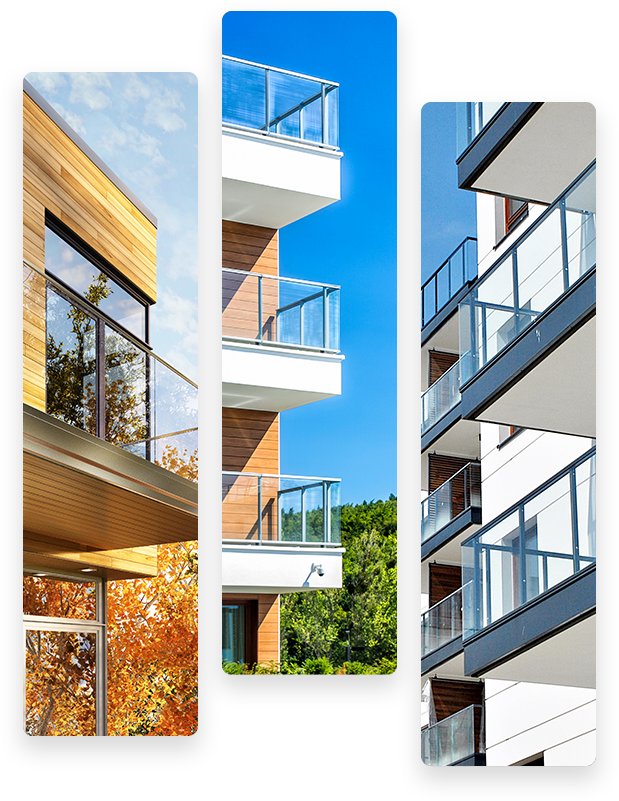
Safety is always a top priority in apartment complexes, and one key area that requires regular attention is the deck. Apartment decks are exposed to the elements year-round, leading to wear and tear, making them potential hazards if not properly maintained. A regular deck inspection is essential to ensure the structural integrity of these spaces. This proactive approach benefits residents and property managers in numerous ways, from providing safety to preventing costly repairs. Ensuring Resident Safety and Peace of Mind with a Deck Inspection The most important benefit of regular deck inspections is the assurance of resident safety. Apartment decks, especially those that are elevated, can pose serious risks if they are not properly maintained. Over time, exposure to the sun, rain, and other environmental factors can cause decks to deteriorate. Problems like wood rot, rusting of metal components, or loose railings may not be immediately visible to the untrained eye but can severely compromise the deck’s structural integrity. A routine deck inspection allows a licensed professional to thoroughly assess the deck’s condition and catch any issues early. Identifying problems such as cracked boards, water damage, or weakened support beams can prevent potential accidents, such as deck collapses. These inspections give residents peace of mind, knowing that their outdoor spaces are safe to use and pose no risk of injury to themselves or their guests. Additionally, regular inspections build trust between tenants and property management. When residents see property managers proactively ensure their safety, it fosters a positive relationship and creates a safer, more responsible living environment. Saving Property Managers Time and Money Property managers can save a significant amount of time and money by keeping up with deck inspections. When decks are not regularly inspected and maintained, minor issues can quickly escalate into major problems. For instance, a small crack in a deck board can worsen over time, leading to water infiltration and wood rot, which can compromise the entire structure. Repairs become more costly and time-consuming once this kind of extensive damage occurs. Property managers can identify and address problems by scheduling regular deck inspections before they turn into expensive repair projects. Proactive maintenance ensures that decks remain in good condition and minimizes the need for emergency repairs, which can be more disruptive and costly. This approach also helps property managers avoid potential liability issues that could arise from accidents caused by deck failures. Maintaining safe and functional decks saves on repair costs and enhances the overall value of the property. Well-maintained outdoor spaces are a key selling point for potential tenants, making the property more attractive and easier to rent. Regular inspections demonstrate that the property management takes a responsible approach to maintenance and prioritizes the well-being of its residents. Deck Inspection Conclusion Regular deck inspections have advantages for residents and property managers. These inspections provide peace of mind for residents, knowing that their decks are safe to use and free from hidden dangers. Proactive inspections can save property managers money by preventing costly repairs and protecting the property’s value. By prioritizing deck safety, apartment complexes can create a secure, well-maintained environment for everyone. Click here to get in contact with an expert from Deck Inspectors today! Deck Inspectors for Southern California is happy to offer our services in Los Angeles, Orange County as well as San Diego and all Southern California surrounding areas like: Glendale, Pasadena, Burbank, Santa Monica, Anaheim, Temecula, Vista, Escondido, Carlsbad, and El Cajon
Choosing a Qualified Inspector for Your Apartment Deck SB 326 Inspection
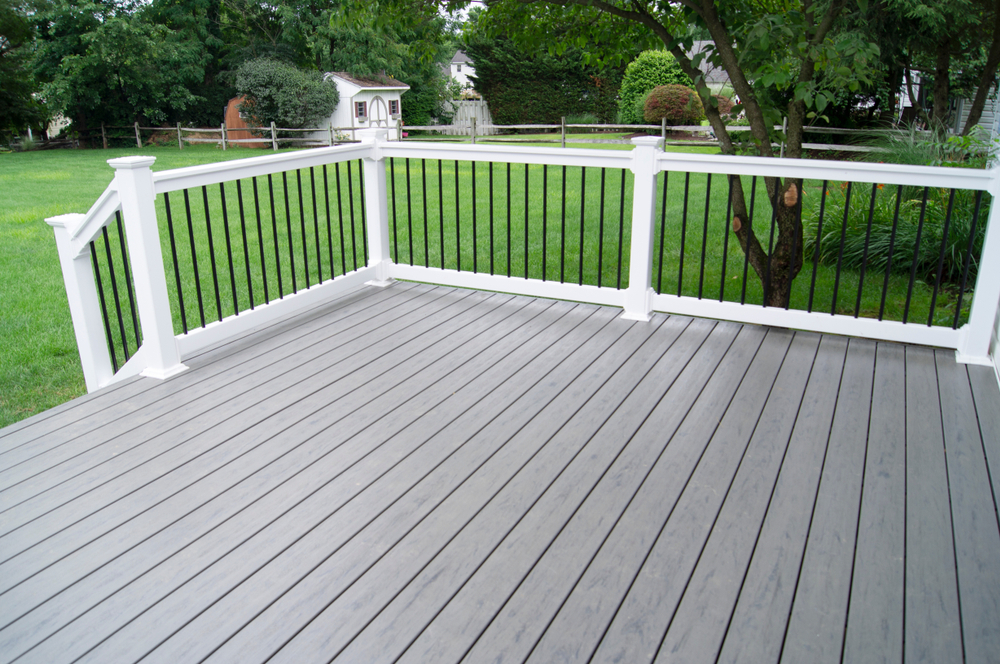
In California, apartment deck inspections have become crucial due to SB 326, a law enacted to ensure the safety and structural integrity of elevated exterior elements in multifamily dwellings. Regular inspections are now mandatory, and choosing a qualified inspector for your SB 326 inspection is essential to ensure compliance and safety. Here’s a guide on how residents can select a reputable and experienced deck inspector. Understanding SB 326 Requirements Before discussing choosing the right inspector, it’s essential to understand the significance of SB 326. This law mandates the inspection of decks, balconies, stairways, and other elevated exterior structures in multifamily dwellings every six years. The goal is to prevent accidents caused by structural failures and ensure the safety of residents and visitors. The law requires inspections by a licensed architect, structural engineer, or a professional with the necessary qualifications. Failure to comply with SB 326 can result in penalties and, more importantly, endanger the safety of tenants. Therefore, hiring a qualified inspector is not just a legal requirement but a critical step in maintaining the safety of your building. Key Factors to Consider When Choosing a Deck Inspector Licensing and Certification The most crucial factor when selecting an inspector for your SB 326 inspection is their professional qualifications. Make sure the inspector you hire is licensed and has the necessary certifications. Only a licensed structural engineer, architect, or general contractor with specific deck inspection experience can legally conduct these inspections in California. Ask for proof of their license and ensure it is current. A reputable inspector will have no issue providing documentation to confirm their credentials. Additionally, inquire about their experience with SB 326 inspections, as this expertise is essential for understanding the intricacies of the law and the structural requirements for decks and balconies in apartment buildings. Experience and Expertise While licensing is necessary, experience is equally vital in ensuring a thorough and accurate inspection. An inspector who has worked on multiple SB 326 inspections will be familiar with the specific structural vulnerabilities common in elevated structures and know what to look for regarding safety risks. You’ll also want to confirm that the inspector has experience working with multifamily properties like yours. Apartment building decks face different challenges compared to residential homes, such as higher foot traffic and exposure to the elements. Hiring someone with relevant expertise ensures that they can spot issues that may be unique to apartment buildings. Reputation and Reviews A quick online search can provide insight into an inspector’s or inspection company’s reputation. Look for reviews or testimonials from other property owners or managers who have undergone SB 326 inspections. Positive reviews strongly indicate the inspector’s professionalism, reliability, and attention to detail. If possible, ask for references. Speaking with previous clients directly can give you a better understanding of what to expect from the inspection process, from communication to the thoroughness of the inspection itself. A well-regarded inspector should have a history of successful inspections and satisfied clients. SB 326 Conclusion Choosing a qualified and experienced inspector for your SB 326 inspection is crucial in maintaining the safety and integrity of your apartment deck or balcony. By verifying licensing, checking experience, and reviewing the inspector’s reputation, residents can ensure they’re working with a professional who will conduct a thorough inspection and help them meet the legal requirements of SB 326. Ultimately, finding the right inspector means safeguarding your property, avoiding costly repairs, and, most importantly, protecting the well-being of your residents. Click here to get in contact with an expert from Deck Inspectors today! Deck Inspectors for Southern California is happy to offer our services in Los Angeles, Orange County as well as San Diego and all Southern California surrounding areas like: Glendale, Pasadena, Burbank, Santa Monica, Anaheim, Temecula, Vista, Escondido, Carlsbad, and El Cajon
Designing Elevated Decks: Factors to Consider for a Safe and Stylish Space
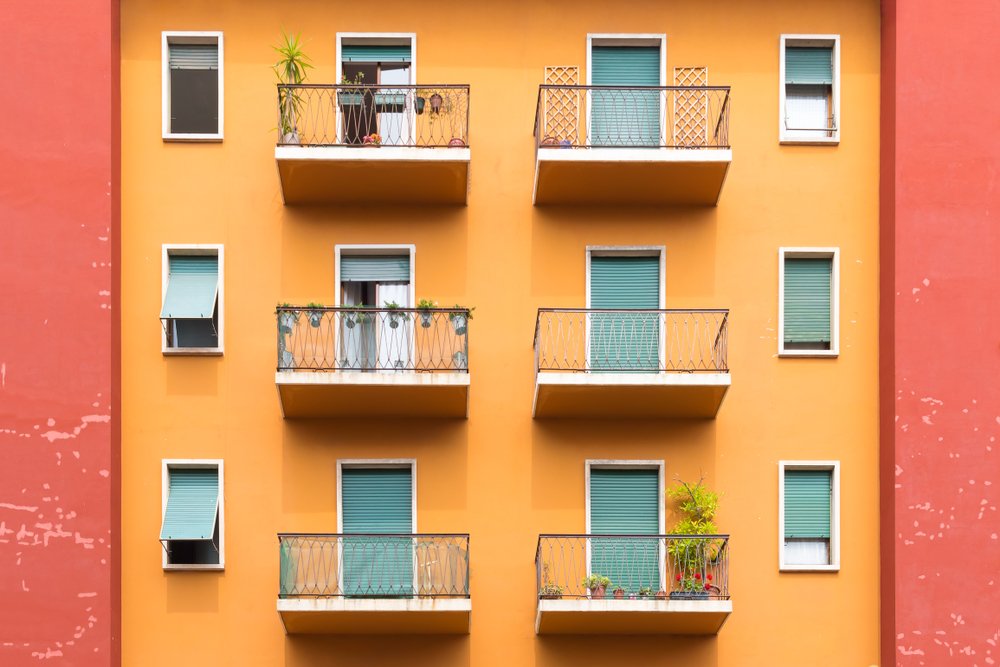
Elevated decks are popular additions to residential and commercial properties, offering extra outdoor space with a view and an opportunity to create a unique environment. However, designing elevated decks requires careful attention to safety and style. In Southern California, where climate and regulations play a significant role, ensuring these decks’ structural integrity and aesthetic appeal is essential for a successful project. Safety First: Structural Considerations for Elevated Decks Safety should always be the top priority when designing elevated decks. As a property owner or contractor, you must ensure the structure can handle the load expected to bear, whether for a small residential deck or an ample commercial space. This means paying close attention to the materials used, the deck’s framing, and its attachment to the building. Using weather-resistant materials like pressure-treated wood, steel, or composite decking for elevated decks can significantly extend the structure’s lifespan while preventing issues like rot and corrosion. Properly treated materials can withstand Southern California’s sunny and sometimes humid climate, reducing the risk of structural failure. Additionally, the deck’s foundation and support beams must be carefully planned to handle the weight of the deck itself, as well as any furniture or people using the space. Hiring a licensed contractor familiar with local building codes is critical. In California, specific regulations like Senate Bills 721 and 326 mandate regular inspections of elevated decks in multi-family residential buildings, ensuring that these structures remain safe and secure over time. Another important safety factor is the railing. Elevated decks must have sturdy railings to prevent accidents. Opt for metal or treated wood railings to withstand the elements, and make sure they are built to code—California regulations typically require railings to be at least 42 inches high. Stylish Elements: Design Tips for Elevated Decks While safety is crucial, the aesthetic design of elevated decks should not be overlooked. A well-designed deck can add significant value to a property, enhancing the outdoor experience while complementing the architectural style of the home or building. One key element to consider is how the deck integrates with the surrounding environment. Elevated decks should blend seamlessly with the landscape. Natural materials like wood or stone can create a cohesive look, while modern options like glass railings offer unobstructed views of the surroundings. Another design consideration is lighting. Installing well-placed lighting is essential for an elevated deck to be usable in the evening. Solar-powered lights, string lights, or even built-in deck lighting can add ambiance while ensuring visibility and safety after dark. Furniture and decor should also reflect both style and function. Choose weather-resistant outdoor furniture that complements the deck’s aesthetic while providing comfort. Adding plants or a small garden can bring life and color to elevated decks, transforming them into inviting, livable spaces. Conclusion Designing elevated decks requires a delicate balance between safety and style. From using durable materials and adhering to safety regulations to incorporating thoughtful design elements that enhance the visual appeal, each factor plays a vital role in creating a functional and beautiful space. Considering these factors can result in an elevated deck that provides years of enjoyment and adds significant value. Click here to get in contact with an expert from Deck Inspectors today! Deck Inspectors for Southern California is happy to offer our services in Los Angeles, Orange County as well as San Diego and all Southern California surrounding areas like: Glendale, Pasadena, Burbank, Santa Monica, Anaheim, Temecula, Vista, Escondido, Carlsbad, and El Cajon
The Impact of SB-326 on the Deck Inspection Industry

The passage of SB-326 in 2019 brought significant changes to the deck inspection industry in California, particularly for multifamily residential buildings. This legislation mandates the regular inspection of exterior elevated elements such as decks, balconies, and stairways in properties with three or more units. As a result, the deck inspection industry has evolved to meet the new regulatory demands, ensuring the safety of residents while helping property owners maintain compliance. This article explores the far-reaching effects of SB-326 on the deck inspection industry and its implications for property managers and owners. Increased Demand for Professional Inspections The most immediate impact of SB-326 has been a surge in demand for professional inspections of exterior elevated elements. The law requires that property owners hire licensed engineers, architects, or contractors to inspect load-bearing structures every nine years to identify potential safety hazards before they result in accidents. This regular inspection cycle has created a new standard of accountability, compelling property owners to prioritize safety and seek the expertise of qualified professionals. This has meant a steady increase in business for the deck inspection industry, particularly for companies specializing in multifamily residential buildings. Inspectors evaluate critical components such as support beams, joists, fasteners, and railings for signs of decay, corrosion, or structural instability. Additionally, the law’s emphasis on maintaining thorough records of these inspections has added another layer of responsibility for property owners and managers, making it even more essential to work with trusted, experienced inspection companies. With more property owners needing inspections to meet compliance deadlines, deck inspection companies are expanding their services to accommodate the rising demand. This has led to job growth in the field and the development of new inspection technologies to streamline the process and deliver more accurate assessments. Enhancing Safety and Preventing Accidents One of the most critical aspects of SB-326 is its focus on accident prevention. By requiring regular inspections of exterior elevated elements, the law helps ensure that these structures remain safe for residents and visitors. This has profoundly affected the deck inspection industry, as companies are now playing a more active role in preventing potential tragedies caused by structural failures. For inspectors, this means a shift from reactive to proactive safety measures. In the past, inspections were often conducted after visible signs of damage or an accident occurred. With SB-326 in place, inspections are now required regularly. This allows inspectors to catch issues like wood rot, corrosion, or improper construction before they lead to dangerous situations. In turn, this increased focus on safety has bolstered the reputation of the deck inspection industry. Increasing awareness of the importance of regular inspections leads to a greater appreciation for the expertise and services inspection companies provide. Ultimately, this benefits the industry and the residents who rely on these structures for everyday use. Conclusion SB-326 has transformed the deck inspection industry, driving demand for professional inspections while enhancing the safety of exterior elevated elements. By requiring regular inspections and a proactive approach to structural maintenance, SB-326 has increased the workload for inspectors and elevated their role in preventing accidents and ensuring compliance. For property owners, partnering with professionals is more essential than ever. Click here to get in contact with an expert from Deck Inspectors today! Deck Inspectors for Southern California is happy to offer our services in Los Angeles, Orange County as well as San Diego and all Southern California surrounding areas like: Glendale, Pasadena, Burbank, Santa Monica, Anaheim, Temecula, Vista, Escondido, Carlsbad, and El Cajon
SB-326 Inspections: How They Save Lives and Prevent Accidents

In Southern California, the safety of elevated exterior elements such as decks, balconies, and walkways is crucial to preventing accidents in multifamily residential buildings. The SB-326 Inspection process, mandated by California’s Senate Bill 326, plays a pivotal role in ensuring these structures remain safe and secure for residents. By requiring regular inspections of exterior elevated elements, SB-326 aims to prevent potential disasters, save lives, and reduce liability for property owners. This article explores how SB-326 Inspections can make a life-saving difference and why they are vital for accident prevention. The Importance of SB-326 Inspections SB-326 was introduced in response to several tragic balcony and deck collapses that resulted in fatalities and severe injuries. The law explicitly targets multifamily residential buildings with at least three units. It requires licensed professionals to inspect all exterior elevated elements every nine years, including decks, balconies, and stairways. The legislation is a proactive measure designed to catch potential structural issues before they turn into catastrophic accidents. The SB-326 Inspection focuses on several critical aspects of a building’s exterior elevated elements, including load-bearing components, support beams, joists, and connectors. These elements are vulnerable to wear and tear due to constant exposure to the weather, moisture, and the weight of people and furniture. Regular inspections help identify problems such as rot, rust, corrosion, or improper construction, which can lead to structural failure if not addressed. By identifying potential issues early, property owners can take corrective action before an accident occurs. This proactive approach saves lives and reduces the likelihood of costly repairs and legal liability in the future. How SB-326 Inspections Prevent Accidents The primary goal of an SB-326 Inspection is to prevent accidents caused by structural failure. Decks and balconies are often exposed to harsh environmental conditions, leading to wood rot, rusting of metal fasteners, and overall weakening of the structure. Without regular inspections, these issues can go unnoticed until it’s too late, resulting in accidents that could have been avoided. During an SB-326 Inspection, licensed professionals examine all load-bearing components to ensure they meet safety standards. These inspections include checking for: Wood Rot and Decay: Over time, moisture can seep into wooden support beams, causing them to rot. Left unchecked, this can lead to deck or balcony collapse. Inspectors will look for signs of wood deterioration, including soft spots, discoloration, or mold. Corrosion of Metal Fasteners and Connectors: Metal components like nails, screws, and brackets are essential for holding a structure together. Corrosion weakens these parts, increasing the risk of structural failure. Inspectors will ensure these fasteners are in good condition and replace any that show signs of rust. Proper Drainage: Poor drainage can accelerate wear and tear on elevated elements. Water buildup can weaken materials and cause additional stress on the structure. Inspectors will check that the deck or balcony has adequate drainage to prevent water accumulation. By conducting these thorough inspections, SB-326 ensures that property owners know potential hazards and can address them before they lead to accidents. Regular inspections not only enhance safety but also promote peace of mind for both property owners and residents. Conclusion The SB-326 Inspection ensures the safety of elevated decks and balconies in multifamily residential buildings across Southern California. SB-326 plays a vital role by mandating regular inspections of these structures, protecting lives, and reducing the risk of injury. Property owners who prioritize SB-326 compliance can rest assured that they are taking the necessary steps to safeguard their residents while preventing costly and tragic accidents. Click here to get in contact with an expert from Deck Inspectors today! Deck Inspectors for Southern California is happy to offer our services in Los Angeles, Orange County as well as San Diego and all Southern California surrounding areas like: Glendale, Pasadena, Burbank, Santa Monica, Anaheim, Temecula, Vista, Escondido, Carlsbad, and El Cajon
What to Look for During an SB-721 Inspection
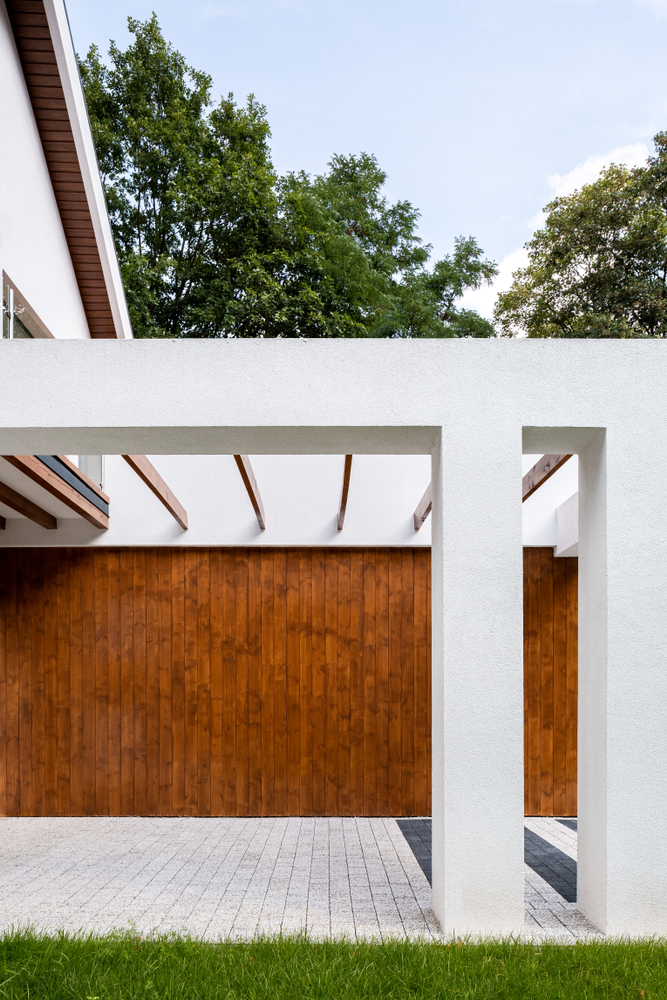
An SB-721 Inspection is crucial for ensuring the safety and structural integrity of elevated decks, balconies, and other load-bearing exterior elements in multifamily residential buildings. Enacted by the California legislature, Senate Bill 721 requires mandatory inspections of these structures every six years to prevent accidents due to wear, decay, or improper construction. As a property owner or manager in Southern California, understanding what to look for during an SB-721 Inspection can help you stay compliant and keep your tenants safe. Below is a checklist of the most critical aspects to inspect when evaluating your deck or balcony for safety. Structural Integrity and Material Condition The first and most critical aspect of an SB-721 Inspection is the overall structural integrity of the deck or balcony. Inspectors will check for any signs of damage or weakening in the following areas: Support Beams and Joists: These components bear the deck’s weight and are essential to its safety. Look for signs of rot, cracks, warping, or shifting, which could indicate that the beams or joists are no longer structurally sound. Decking Material: Check the deck’s surface for signs of decay, splintering, or sagging. If the decking material is wood, ensure it’s properly treated and rot-free. For composite materials, look for any delamination or structural failure. Fasteners and Connectors: The hardware that holds the deck together, such as nails, screws, and metal connectors, should be inspected for rust or corrosion. Over time, these components can weaken and compromise the deck’s stability. Water Damage and Drainage Issues & SB-721 Inspection Water is one of the biggest threats to the longevity of elevated decks, and addressing water damage is a key focus of an SB-721 Inspection. Inspectors will examine the deck for the following: Signs of Water Intrusion: Water damage can lead to rot and compromise the structural integrity of wooden decks. Look for water stains, mold, mildew, or soft spots in the wood, particularly where the deck meets the building. Proper Drainage: Check that the deck has adequate drainage systems in place to prevent water from pooling on the surface. This includes ensuring that gutters and downspouts are clear and functional. Poor drainage can lead to water accumulation, causing long-term damage to the deck’s materials. Flashings and Sealants: Flashings are metal strips that prevent water from entering between the deck and the building. These should be inspected for rust, damage, or improper installation. Sealants around the edges of the deck should be intact and free of cracks. Handrails and Guardrails Handrails and guardrails are critical safety features of elevated decks. During an SB-721 Inspection, inspectors will check the following: Height and Stability: Ensure that the handrails and guardrails meet California’s height requirements (typically 42 inches) and are secure. Wobbly or loose railings can present a significant hazard. Material Condition: Like the deck’s structural components, the railings’ materials must be in good condition. Check for rust, rot, or any signs of wear that could reduce their effectiveness in preventing falls. SB-721 Inspection Conclusion Regular SB-721 Inspections are essential for identifying potential safety hazards and ensuring that elevated decks, balconies, and other exterior structures comply with California’s safety regulations. Property owners and managers can protect residents and avoid costly repairs in the future by focusing on the key areas of structural integrity, water damage, and the condition of handrails and guardrails. Click here to get in contact with an expert from Deck Inspectors today! Deck Inspectors for Southern California is happy to offer our services in Los Angeles, Orange County as well as San Diego and all Southern California surrounding areas like: Glendale, Pasadena, Burbank, Santa Monica, Anaheim, Temecula, Vista, Escondido, Carlsbad, and El Cajon
How to Create a Memorable Experience with Exterior Elevated Element
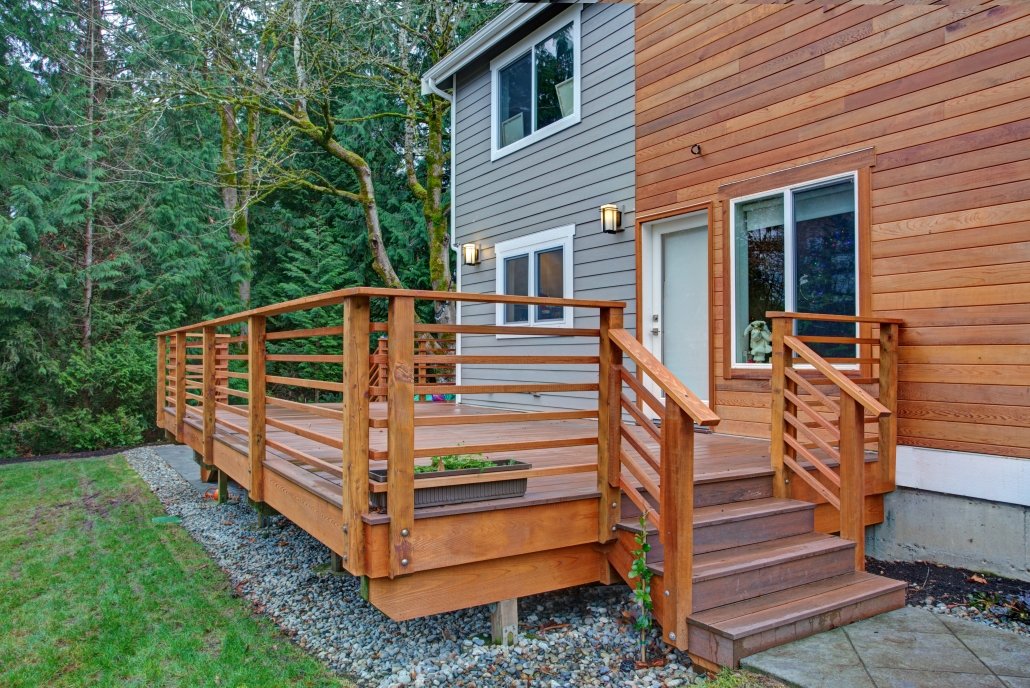
Creating an inviting and memorable outdoor space involves more than choosing the right furniture and decor—it’s about ensuring safety, functionality, and aesthetics. An exterior elevated element like balconies, decks, and walkways are crucial in achieving this balance, especially in residential and commercial properties. By prioritizing design, safety, and regular inspection, you can transform these elevated structures into standout features that enhance any outdoor environment. Prioritize Design and Functionality of Exterior Elevated Element The first step to creating a memorable experience with Exterior Elevated Elements is focusing on thoughtful design and functionality. Whether it’s a deck with a stunning view or a balcony overlooking a garden, the design of your elevated structures can make or break the overall experience. For residential properties, consider adding custom railings, lighting, or planter boxes to bring personality and charm to the space. Commercial properties can benefit from integrating outdoor dining areas or communal lounges into their elements, ensuring they serve aesthetic and practical purposes. It’s also essential to consider the materials you choose for construction. Opt for durable, weather-resistant materials like treated wood, composite decking, or steel to ensure the longevity of the element. Beyond aesthetics, these materials will ensure the safety and structural integrity of your elevated element for years to come. Ensure Safety Through Inspections and Maintenance Safety is the foundation of any memorable experience with an Exterior Elevated Element. As a property owner or manager in Southern California, regular inspections are crucial to maintaining the structural integrity of these elements, especially given the state’s strict building codes. For example, California Senate Bills 326 and 721 require periodic inspections of elevated elements in multifamily residential buildings to prevent accidents caused by structural failures. These laws emphasize the importance of safety and accountability for anyone owning or managing properties with these elements. Regular maintenance of your exterior elevated element includes inspecting for rot, rust, or other wear and tear signs. Pay close attention to the integrity of fasteners, connectors, and load-bearing components. These are often overlooked but can lead to safety hazards if neglected. Hiring a professional inspection service ensures that minor issues are identified and resolved before they become significant problems. Enhance the Experience with Thoughtful Details Small touches can significantly impact the user experience regarding Exterior Elevated Elements. Incorporating comfortable seating, outdoor lighting, and greenery can elevate the ambiance of any deck, balcony, or walkway. For nighttime use, string lights or solar-powered lamps can add warmth and character, making the space inviting even after dark. Plants can be used to create a natural, calming environment, which can make the area feel like a secluded retreat. Incorporating thoughtful details improves the aesthetic value and usability of your elevated elements. Creating a safe and enjoyable space can enhance the value of homes or businesses while providing a memorable experience. Exterior Elevated Element Conclusion Exterior Elevated Elements are more than just structural features—they are opportunities to create safe, functional, and visually appealing spaces. Owners can ensure elevated areas become parts of the overall property experience by prioritizing thoughtful design, safety inspections, and attention to detail. Click here to get in contact with an expert from Deck Inspectors today! Deck Inspectors for Southern California is happy to offer our services in Los Angeles, Orange County as well as San Diego and all Southern California surrounding areas like: Glendale, Pasadena, Burbank, Santa Monica, Anaheim, Temecula, Vista, Escondido, Carlsbad, and El Cajon
From Legislation to Practice: Navigating SB 721 Compliance
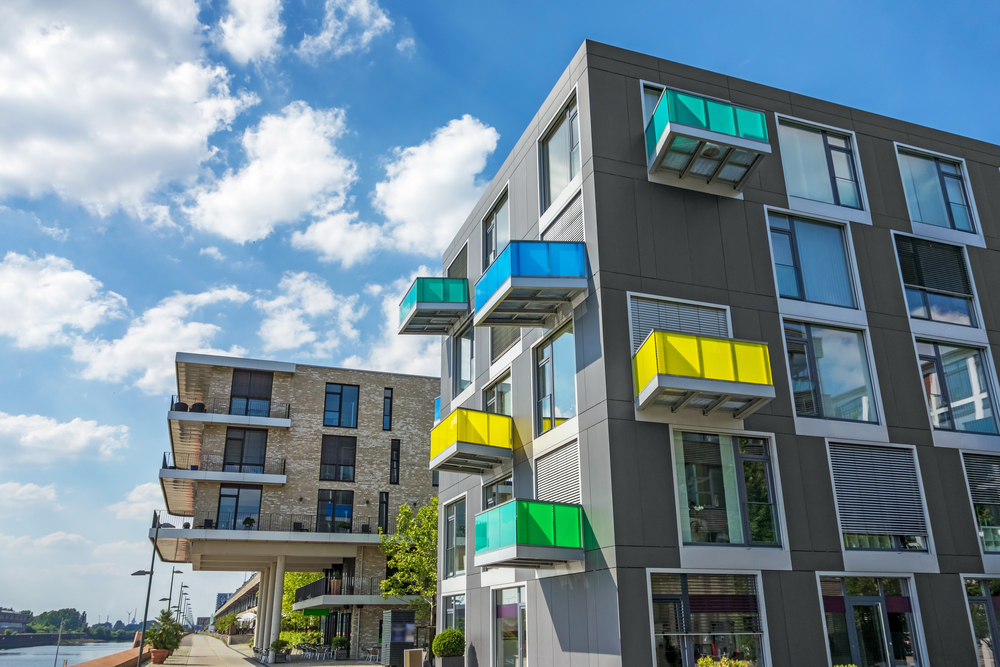
In Southern California, the safety of elevated exterior elements like decks and balconies is a matter of construction and legal compliance. SB-721 mandates regular inspections of these structures in multifamily residential buildings to prevent accidents and ensure safety. Understanding the requirements of SB-721 and how to implement them is essential for maintaining compliance and avoiding costly penalties. Understanding the SB-721 Legislation Senate Bill 721 addresses the growing concerns over the structural safety of exterior elevated elements. This legislation explicitly targets multifamily residential buildings with three or more units. All load-bearing structures, such as decks, balconies, stairways, and walkways, must undergo a detailed inspection every six years. The law’s primary goal is to identify and rectify any issues related to the deterioration of these structures before they pose a safety hazard. Components subject to inspection include support beams, joists, fasteners, and railings, as these parts bear the brunt of the weight and exposure to the elements. Property owners must hire a licensed professional to inspect and provide a detailed report. Failure to comply with SB-721 can result in hefty fines and potential legal consequences. Beyond the legal aspect, property owners are morally obligated to protect tenants and residents from possible accidents. Implementing SB-721 Inspections: What Property Owners Need to Know While the legislation provides a clear framework for compliance, the practical steps to follow can sometimes be overwhelming. Here are the essential actions to help you navigate SB-721 requirements and ensure your property meets all necessary safety standards: Hire a Qualified Professional: The first step is to hire a licensed professional with expertise in elevated exterior structures. They will conduct a thorough inspection of all load-bearing elements to determine if there are any signs of wear, rot, rust, or structural instability. Focus on Key Structural Components: During the inspection, attention will be placed on the critical load-bearing elements, including: Support Beams and Joists: These bear the majority of the weight and are prone to deterioration from moisture, insects, and weather conditions. Fasteners and Connectors: Rusty or corroded metal can compromise the integrity of the deck or balcony, so these need to be scrutinized. Railings and Guardrails: These must be secure and meet California’s height and strength standards to ensure they can prevent falls. Address Issues Promptly: Property owners have 120 days to address any issues found after receiving the inspection report. Repairs or replacements must be prompt to bring the structure into compliance with SB-721. In cases of significant damage, extensions may be granted if a plan for repairs is in place. Keep Detailed Records: Thorough documentation is critical for legal and safety reasons. After each inspection, property owners should keep copies of the inspection report and any repair invoices. These records may be requested during future inspections or if there is a dispute regarding the property’s compliance with SB-721. Conclusion Navigating the complexities of SB-721 compliance can seem daunting. Protecting your tenants’ safety and your property’s legal standing is essential. Property owners can ensure they meet requirements by understanding the legislation and partnering with a professional. Regular inspections keep you compliant with the law and offer peace of mind, knowing your decks and balconies are safe and secure. Click here to get in contact with an expert from Deck Inspectors today! Deck Inspectors for Southern California is happy to offer our services in Los Angeles, Orange County as well as San Diego and all Southern California surrounding areas like: Glendale, Pasadena, Burbank, Santa Monica, Anaheim, Temecula, Vista, Escondido, Carlsbad, and El Cajon
Spotlight on Safety: Success Stories of SB 721 Inspections Preventing Tragedies
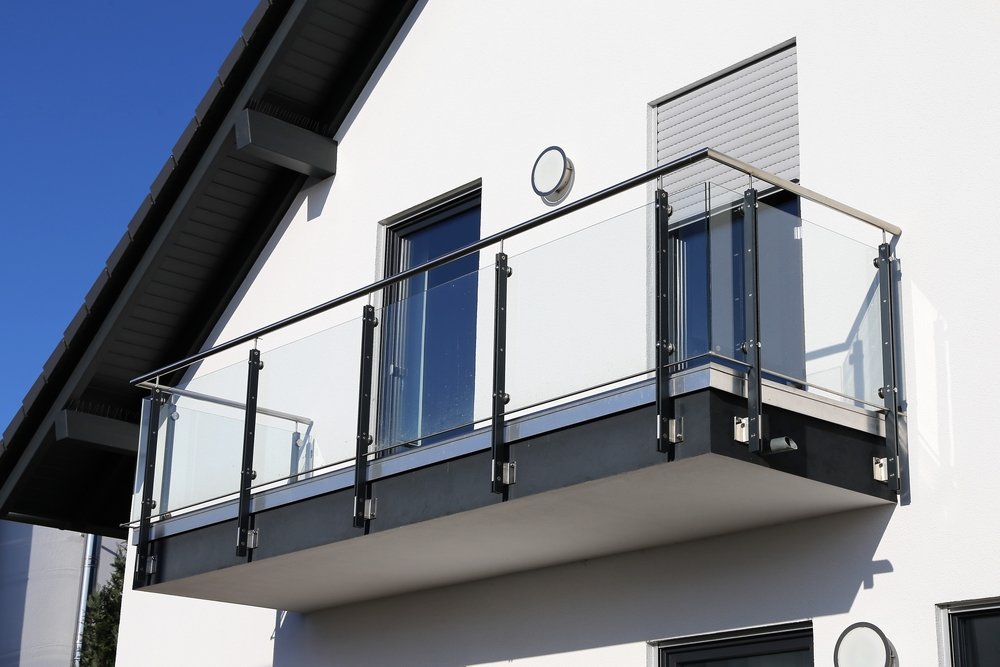
Senate Bill 721 (SB 721) was a critical step in ensuring the safety of elevated exterior elements across California. SB 721’s primary goal is to prevent potential tragedies, and it has already proven to be a lifesaver in numerous instances. This article highlights some success stories where SB 721 inspections have successfully identified dangerous conditions and prevented serious incidents. Early Detection Saves Lives In one notable case, a multi-unit residential complex in LA underwent a routine SB 721 inspection, revealing significant water damage and dry rot in several balconies. These issues were not visible casually, but the licensed inspector conducting the inspection identified the compromised structures. The inspection report detailed the extent of the damage and recommended immediate repairs. The property management quickly addressed the issues, reinforcing the balconies and replacing damaged materials. This prompt action likely averted a catastrophic collapse, protecting the tenants and avoiding potential injuries. Another success story involves a residential building in San Francisco. Here, an SB 721 inspection uncovered severe corrosion in the metal supports of several exterior staircases. The corrosion was hidden behind decorative cladding, making it difficult to detect without a thorough inspection. The report emphasized the urgent need for repairs, and the building’s owners promptly took action. By addressing the problem early, the owners prevented a potentially fatal accident, ensuring the safety of residents. The Value of Preventative Measures The SB 721 inspections are not just about identifying visible damage; they also serve as a crucial preventative measure. For example, in a San Diego apartment complex, this inspection revealed several balconies had been improperly constructed, with insufficient drainage. This was leading to water accumulation and potential structural weakening. Although there were no immediate signs of decay, these findings prompted proactive repairs to improve drainage and reinforce the structures. This foresight prevented the gradual deterioration that could have led to serious safety issues. In another instance, an SB 721 inspection in Sacramento discovered that several wooden balconies had not been treated with weather-resistant coatings, making them vulnerable to the region’s wet winters. While the balconies were still in relatively good condition during the inspection, the inspector’s recommendations for weatherproofing were promptly followed. This preventative action ensured the long-term durability of the balconies and protected residents from the risk of future structural failures. SB 721 Conclusion These success stories underscore the vital role that SB 721 inspections play in preventing tragedies and ensuring safety. These inspections protect residents and help property owners maintain safe and compliant structures by identifying hidden dangers and recommending necessary repairs. The proactive measures taken as a result of these inspections prevent accidents and extend the lifespan of building elements, preserving property value and providing peace of mind to all parties involved. As these stories demonstrate, the true value of SB 721 lies in its ability to prevent the worst-case scenarios and keep communities safe. Contact an expert at Deck Inspectors of Southern California today by clicking here! Deck Inspectors for Southern California is happy to offer our services in Los Angeles, Orange County as well as San Diego and all Southern California surrounding areas like: Glendale, Pasadena, Burbank, Santa Monica, Anaheim, Temecula, Vista, Escondido, Carlsbad, and El Cajon
